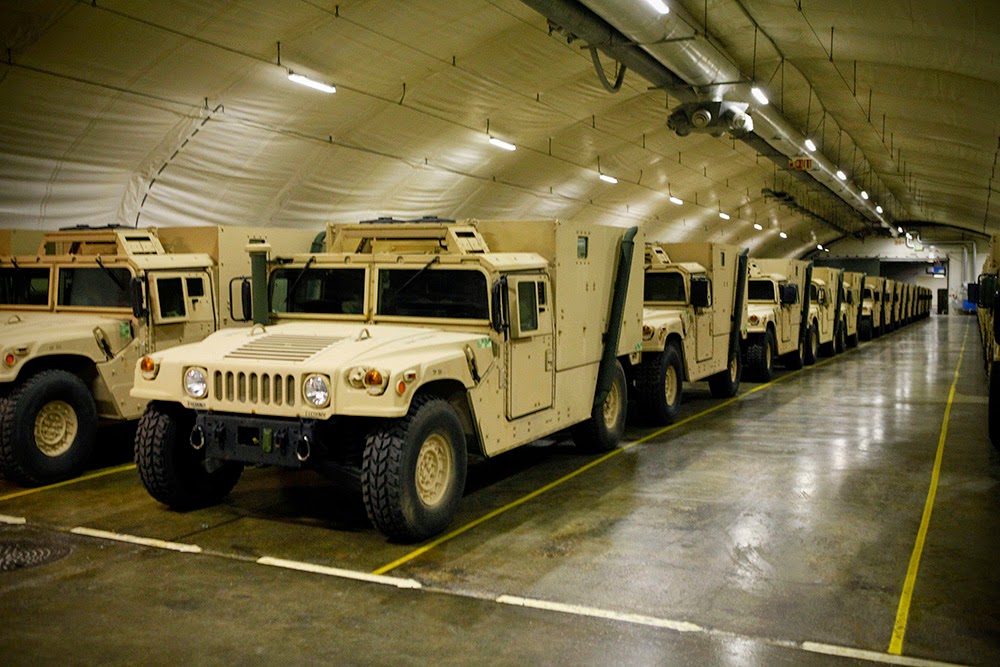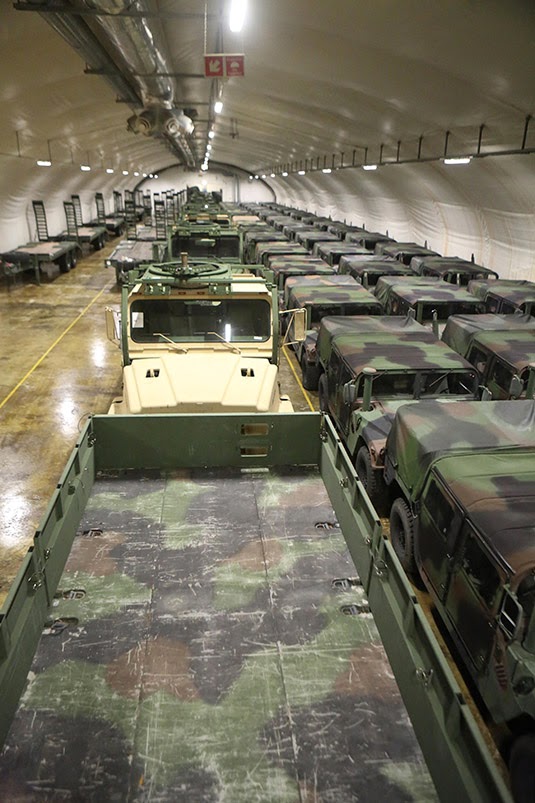
I was in Maastricht, Netherlands, for a couple nights last week, mostly as a way to break-up my trip across the Atlantic and thus help get over jet-lag before attending an archaeology conference (where I currently type this).
I went specifically to Maastricht, however, because it’s home to an astonishing number of subterranean sites, from 800-year-old limestone mines and 17th-century star fortifications to NATO defense bunkers. I basically checked into my hotel then disappeared underground for the rest of the visit.
Here are some pics.

My morning started here, at the entrance to the Casemates Waldeck, a labyrinth of defensive earthworks complete with tunnels, counter-mine tunnels, barracks, and firing positions. Large parts of the system were then later repurposed as civilian air-raid shelters during WWII.


The geometric logic of the forts was—among other things—to lure enemy attackers in over cliff-like artificial drops and ridges, thinking they were on their way to the heart of the city. However, this simply trapped them between huge brick walls, directly in front of disguised gun emplacements, many of which were deliberately aimed at stomach-height to maximize suffering.
If you go through the door seen in the above photographs, meanwhile, you end up inside a bewildering system of multi-level tunnels weaving around for kilometers beneath the outer edge of the city.







Because the city has expanded and grown over the centuries, whole neighborhoods now sit atop these structures; if you live in Maastricht, you might very well have disused military fortification tunnels running under your basement.
What’s more, not all of the tunnels are mapped—which means that some are neither maintained nor stabilized. Apparently, seasonal floods have led to sinkholes above, as streets partially collapse into the system.
And that’s just one of many, many underground sites you can tour.

The next place I headed was called the Zonneberg Caves—which are not natural caves, but a colossal limestone mine—and I honestly can say I would spend entire weeks down there.
I’m just randomly typing facts from memory, because I’m on a break from a conference and want to get these photos up, which means I will almost certainly get a few details wrong, but I believe they said that “only” 80 or so kilometers of these ancient limestone mines remain from more than 200, and that the first shafts were cut in the 13th century.

The mines extend all the way over the international border into Belgium. The Belgian tunnels are apparently closed to the public, yet people sneak into them all the time.




There are 20th-century artworks painted on the walls, much older graffiti etched directly into rock, and massive corridors extending off on all sides into darkness.



If you’re into the underground and ever have an opportunity to spend more time than a tour down there, I would recommend it without any hesitation—and I will be deeply, deeply jealous.
The site is even complete with a little church altar.

Bear in mind, this is all still the same day.

The next site I went to was accessed through a locked metal door in the rock (pictured above). This system, known as the North Caves, is actually physically connected to the Zonneberg Caves, although it would take an hour or more to get between them underground. Like I say, I would go back there and wander around in a heartbeat.







The added interest of this latter system is that parts of it were used during WWII to house paintings by the Old Masters, protecting them from Nazi plunder and stray Allied bombs alike.





At the end, you go into a place called “the Vault” to see where Rembrandts and other paintings were hung while war waged above.

Finally, after many hours underground, I walked outside—and the first thing I saw was this rainbow. A cheesily enjoyable end to a fantastic day.

If you’re tempted to see any of these places yourself, and you hope to do so legally, check out Maastricht Underground for potential tours.
[All photos by Geoff Manaugh/BLDGBLOG.]
 [Image: A rock-acid drip-irrigation hub for the “
[Image: A rock-acid drip-irrigation hub for the “
















 [Image: Binnewater Kilns, photo by BLDGBLOG.]
[Image: Binnewater Kilns, photo by BLDGBLOG.] [Image: The Rosendale Trestle, photo by BLDGBLOG.]
[Image: The Rosendale Trestle, photo by BLDGBLOG.]

 [Image: Caves everywhere! Photos by BLDGBLOG.]
[Image: Caves everywhere! Photos by BLDGBLOG.] [Image: An entrance to the Widow Jane Mine; photo by BLDGBLOG.]
[Image: An entrance to the Widow Jane Mine; photo by BLDGBLOG.]


 [Image: Inside the Widow Jane Mine; photos by BLDGBLOG.]
[Image: Inside the Widow Jane Mine; photos by BLDGBLOG.] [Image: Flooding inside the Widow Jane Mine; photo by BLDGBLOG.]
[Image: Flooding inside the Widow Jane Mine; photo by BLDGBLOG.] [Image: Lawn chairs facing the black waters of a flooded mine; photo by BLDGBLOG.]
[Image: Lawn chairs facing the black waters of a flooded mine; photo by BLDGBLOG.]
 [Image: A creepy, ruined house in the woods, photo by BLDGBLOG.]
[Image: A creepy, ruined house in the woods, photo by BLDGBLOG.]
 [Image: Cement world; photos by BLDGBLOG.]
[Image: Cement world; photos by BLDGBLOG.] [Image: “Born to Die”—it’s hard to argue with that, although when I texted this photo to a friend he thought it said “Born to Pie,” which I suppose is even better. Photo by BLDGBLOG.]
[Image: “Born to Die”—it’s hard to argue with that, although when I texted this photo to a friend he thought it said “Born to Pie,” which I suppose is even better. Photo by BLDGBLOG.]
 [Image: Photos by BLDGBLOG.]
[Image: Photos by BLDGBLOG.] [Image: An otherwise unrelated photo of a cave in China, taken by @PhailMachine, via
[Image: An otherwise unrelated photo of a cave in China, taken by @PhailMachine, via  [Image: Photo by
[Image: Photo by  [Images: Photo by
[Images: Photo by  [Image: Photo by
[Image: Photo by  [Image: Possible cave entrance on Mars, via
[Image: Possible cave entrance on Mars, via 






 [Image: A salt cave in Israel; image via
[Image: A salt cave in Israel; image via  [Image: Drone footage of a Cornwall garden sinkhole, via the
[Image: Drone footage of a Cornwall garden sinkhole, via the  [Image: Photo courtesy
[Image: Photo courtesy 
 [Photo: “
[Photo: “ [Photo: “
[Photo: “ [Photo: “
[Photo: “
 [Image: “Humvees are stored inside the Frigaard Cave in central Norway. The cave is one of six caves that are part of the Marine Corps Prepositioning Program-Norway, which supports the equipping of Marine Expeditionary Brigade consisting of 15,000 Marines and with supplies for up to 30 days.”
[Image: “Humvees are stored inside the Frigaard Cave in central Norway. The cave is one of six caves that are part of the Marine Corps Prepositioning Program-Norway, which supports the equipping of Marine Expeditionary Brigade consisting of 15,000 Marines and with supplies for up to 30 days.”  [Image: “Rows of front loaders and 7-ton trucks sit, gassed up and ready to roll in one of the many corridors in the Frigard supply cave located on the Vaernes Garrison near Trondheim, Norway. This is one of seven [see previous caption!] caves that make up the Marine Corps Prepositioning Program-Norway facility. All the caves total more than 900,000 sq. ft. of storage space, full of enough gear to outfit 13,000 Marines for up to 30 days.”
[Image: “Rows of front loaders and 7-ton trucks sit, gassed up and ready to roll in one of the many corridors in the Frigard supply cave located on the Vaernes Garrison near Trondheim, Norway. This is one of seven [see previous caption!] caves that make up the Marine Corps Prepositioning Program-Norway facility. All the caves total more than 900,000 sq. ft. of storage space, full of enough gear to outfit 13,000 Marines for up to 30 days.”  [Image: “Medium Tactical Vehicle Replacements, High Mobility Multipurpose Wheeled Vehicles and trailers, which belong to Marine Corps Prepositioning Program-Norway are staged in a storage cave at Tromsdal, Norway, Feb. 24, 2014. Marine Corps began storing equipment in several cave sites throughout Norway in the 1980s to counter the Soviets, but the gear is now reserved for any time of crisis or war.”
[Image: “Medium Tactical Vehicle Replacements, High Mobility Multipurpose Wheeled Vehicles and trailers, which belong to Marine Corps Prepositioning Program-Norway are staged in a storage cave at Tromsdal, Norway, Feb. 24, 2014. Marine Corps began storing equipment in several cave sites throughout Norway in the 1980s to counter the Soviets, but the gear is now reserved for any time of crisis or war.”  [Image: “China: ample space for a spare copy of France”; image by
[Image: “China: ample space for a spare copy of France”; image by